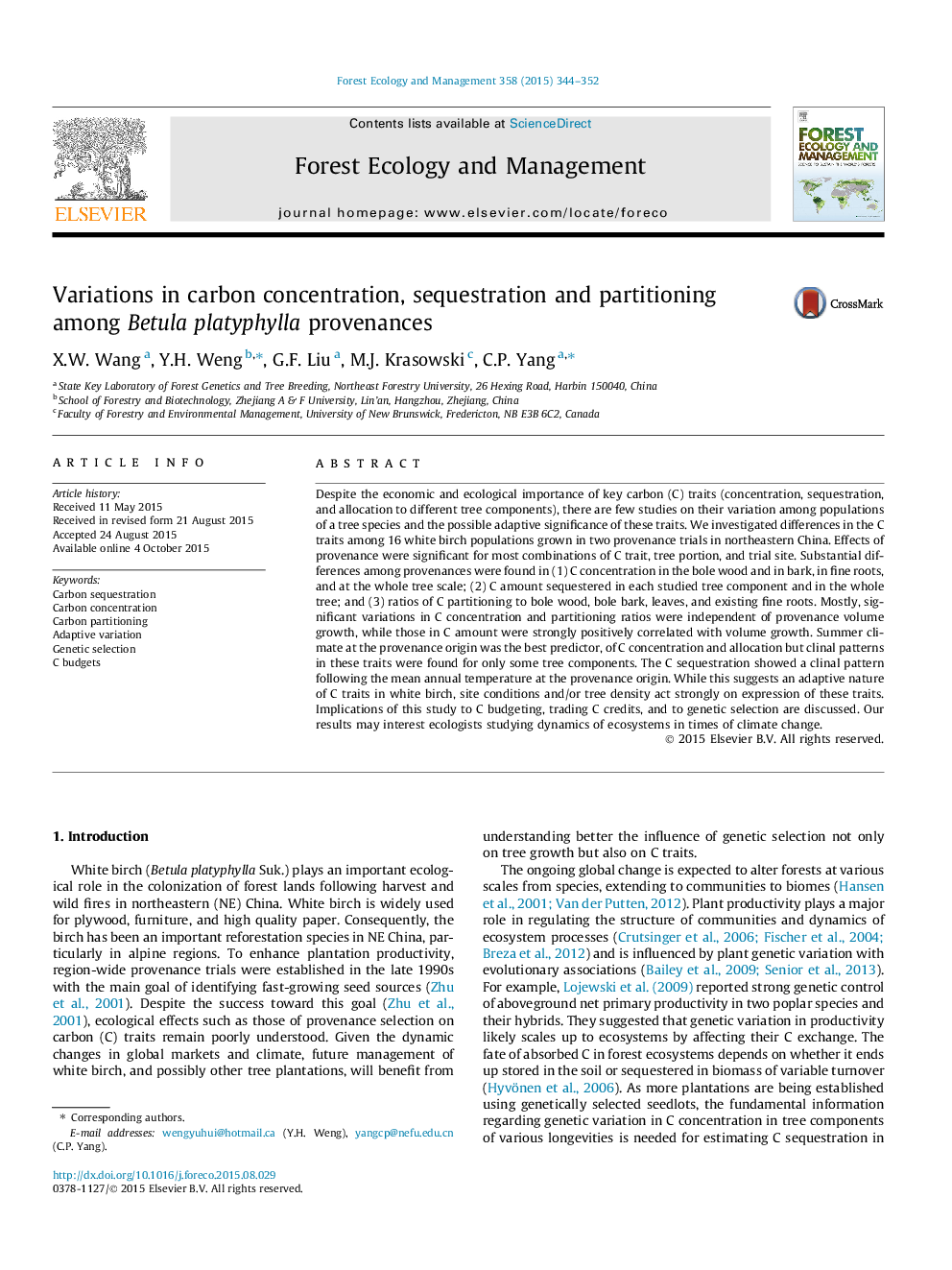| کد مقاله | کد نشریه | سال انتشار | مقاله انگلیسی | نسخه تمام متن |
|---|---|---|---|---|
| 86084 | 159163 | 2015 | 9 صفحه PDF | دانلود رایگان |

• Tree C content depended on tree volume in 16 white birch populations on two sites.
• C concentration varied among populations and tree portions from 41.5% to 50.4%.
• C concentration and partitioning were unrelated to tree volume.
• C concentration showed modest adaptive character.
• Selection and breeding for C concentration to increase C stocks is unnecessary.
Despite the economic and ecological importance of key carbon (C) traits (concentration, sequestration, and allocation to different tree components), there are few studies on their variation among populations of a tree species and the possible adaptive significance of these traits. We investigated differences in the C traits among 16 white birch populations grown in two provenance trials in northeastern China. Effects of provenance were significant for most combinations of C trait, tree portion, and trial site. Substantial differences among provenances were found in (1) C concentration in the bole wood and in bark, in fine roots, and at the whole tree scale; (2) C amount sequestered in each studied tree component and in the whole tree; and (3) ratios of C partitioning to bole wood, bole bark, leaves, and existing fine roots. Mostly, significant variations in C concentration and partitioning ratios were independent of provenance volume growth, while those in C amount were strongly positively correlated with volume growth. Summer climate at the provenance origin was the best predictor, of C concentration and allocation but clinal patterns in these traits were found for only some tree components. The C sequestration showed a clinal pattern following the mean annual temperature at the provenance origin. While this suggests an adaptive nature of C traits in white birch, site conditions and/or tree density act strongly on expression of these traits. Implications of this study to C budgeting, trading C credits, and to genetic selection are discussed. Our results may interest ecologists studying dynamics of ecosystems in times of climate change.
Journal: Forest Ecology and Management - Volume 358, 15 December 2015, Pages 344–352